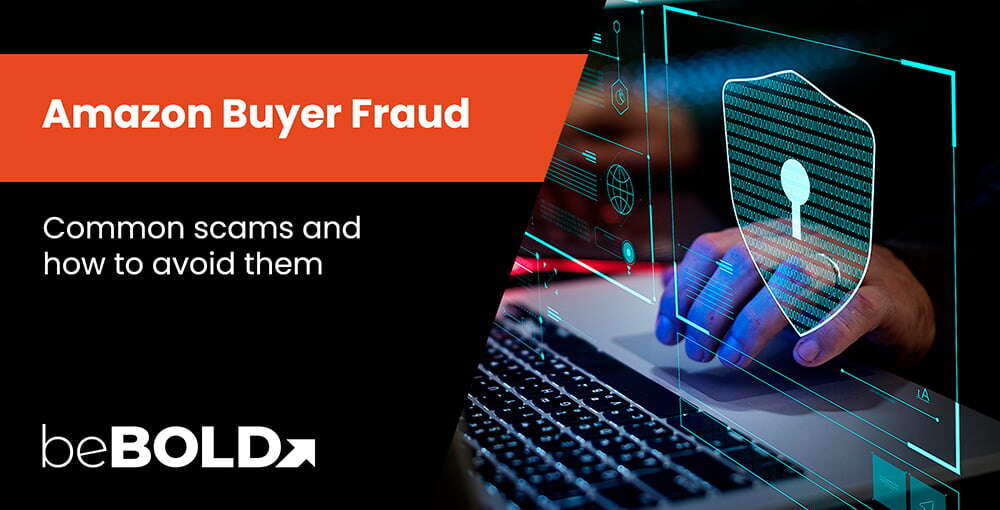It's no surprise that operating on the world's biggest online marketplace, Amazon, can be challenging. You may already be used to micromanaging your listings and marketing strategies to outperform your competitors and draw attention. 'Everyone is trying to get ahead. However, some may not realize that consumers are also trying to one-up the sellers.
Buyer fraud is a growing concern that can significantly impact your business. Deceptive tactics can lead to lost revenue, damaged reputation, and unnecessary stress. Knowing the common types of buyer fraud and understanding how to protect yourself is crucial.
Staying informed and vigilant can prevent a lot of headaches on the already intensely competitive platform. This article exposes six common scams that have become recent Amazon trends and some practical tips on how to avoid them.
What is Buyer Fraud?
Buyer fraud in eCommerce, specifically as a subset of Amazon fraud, refers to deceptive practices by consumers aimed at gaining undue benefits, such as receiving free products or refunds without returning items. This unethical behavior exploits seller vulnerabilities or buyer privileges, leading to financial losses and operational disruptions.
Buyer fraud can manifest in various forms, significantly impacting sellers. For example, they can take advantage of vulnerabilities in the fulfillment-by-merchant (FBM) system to exploit delivery processes. Other common tactics include:
- abusing promotional discounts
- submitting false claims of item condition
- exploiting chargeback processes through payment providers
These fraudulent activities not only cause direct financial losses but also result in increased shipping and handling costs, inventory management, and potential account suspensions due to negative feedback.
6 Amazon Buyer Scams and How Sellers Can Avoid Them
.jpg?width=567&height=347&name=cyber-monday-5463567_1280%20(1).jpg)
Here are some of the most frequent buyer scams you may encounter selling on Amazon. Implementing their respective security measures can let your business maintain a secure and profitable presence on the platform.
1. False claims of non-receipt
Some buyers falsely claim they did not receive the item to get a refund or replacement. This Amazon scam exploits the trust-based nature of online transactions, particularly when sellers use less secure shipping methods.
To mitigate this scam, you should always use tracked shipping and consider requiring signature confirmation for high-value items. Keeping detailed shipping records and providing customers with tracking information can help resolve disputes and provide evidence of a false claim.
2. Item not as described
Buyers may falsely claim that the received item differs significantly from the description to get an undeserved refund. This method can be particularly damaging if they also leave negative reviews. Sellers should ensure their product descriptions are accurate, use high-quality images, and include detailed specifications.

Clear and comprehensive information about the product reduces the likelihood of disputes and leaves little wiggle room for malicious actors. Additionally, documenting the condition of items before shipping can help in fighting fraudulent claims.
3. Return fraud
Return fraud is the next step up from the previous scams. It occurs when buyers return items that are different from what was initially purchased or return used items as new. In the fulfillment-by-Amazon (FBA) system, buyers might take advantage of Amazon's lenient return policies.
You can implement stringent return policies and inspect returned items carefully to combat this tactic. For high-value items, you should consider restocking fees to discourage fraudulent returns. You may also be able to identify and address potential abusers by reviewing return patterns across your store, which can be made easier using Amazon analytics tools.
4. Unauthorized returns
The last of the common receipt and return scams are unauthorized returns, which involve buyers returning items without prior authorization or outside the return window. This practice disrupts inventory management and creates headaches even when done without ill intentions.
A clear return policy on your listings is the best defense against unauthorized returns. Monitor return requests closely and stick to your stated policy. You may feel sorry for the buyer, but bending the rules can open vulnerabilities for others. Another important barrier is having a return merchandise authorization (RMA) process to help manage returns more effectively.
5. Coupon and promotion abuse
Some buyers exploit coupons and promotional discounts beyond their intended use, making multiple purchases or using different accounts to maximize benefits. Such loopholes can significantly impact profit margins, making your strategies counterproductive.
You must set clear terms and conditions for promotional offers, including limits on usage per customer. Monitor for unusual purchase patterns during promotions and consider using software tools to detect and prevent coupon abuse.
6. Friendly fraud (Chargeback fraud)
Friendly fraud, also known as chargeback fraud, occurs when buyers place orders and then dispute the charges with their credit card company, claiming they did not authorize the purchase. The card company then initiates chargebacks.
Individually, the amount may not appear significant, but actors can conduct this fraud maliciously and en masse to tank a seller's profits deliberately.
To minimize this risk, keep comprehensive records of transactions, including shipping confirmations and customer communications. Use secure payment processing systems that offer fraud protection and regularly review chargeback cases to identify patterns. You may wish to avoid payment processors with high chargeback fees if you're selling lower-priced items.
Selling Safely on Amazon
Buyer fraud is a clear and significant threat to your business. Sellers have repeatedly voiced an uptick in Amazon buyer scam cases. But with seemingly no response from Amazon, it's up to you to protect yourself. You have to be proactive in implementing preventative measures and vigilant for fraud attempts.
Staying informed about evolving fraud tactics and maintaining trust and integrity will help you achieve long-term success on Amazon. For more expert advice that can support your efforts on the world's largest online marketplace, consider beBOLD Digital. We're a full-service Amazon agency with years of experience and unbeatable dedication.







Comments